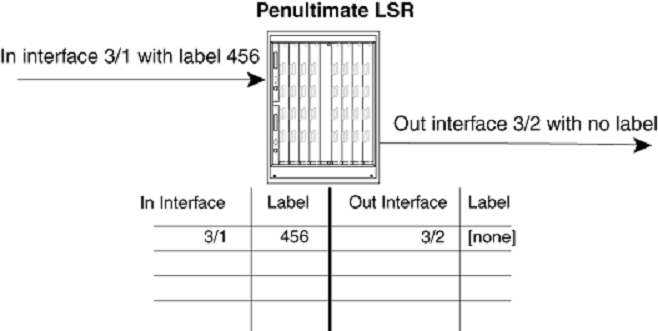Penultimate Hop Popping
On signaled LSPs, the MPLS label is popped at the next-to-last LSR in the LSP, instead of at the egress LER. This action is called penultimate hop popping. Penultimate hop popping improves forwarding efficiency by allowing the egress LER to avoid performing both a MPLS forwarding table lookup and an IP forwarding table lookup for each packet exiting the LSP. Instead, the MPLS label is popped at the penultimate (next-to-last) LSR, and the packet is forwarded to the egress LER with no MPLS encoding. The egress LER, in fact, does not recognize the packet as emerging from an LSP.
Penultimate hop popping illustrates the operation that takes place at the penultimate LSR in an LSP.

When an LSR receives an MPLS packet, it looks up the label in its MPLS forwarding table. Normally, this table maps the label and inbound interface to a new label and outbound interface. However, when this is the penultimate LSR in an LSP, the label and inbound interface map only to an outbound interface. The penultimate LSR pops the label and forwards the packet - now a regular IP packet - out the outbound interface. When the packet reaches the egress LER, there is no indication that it had been forwarded over an LSP. The packet is forwarded using standard hop-by-hop routing protocols.

